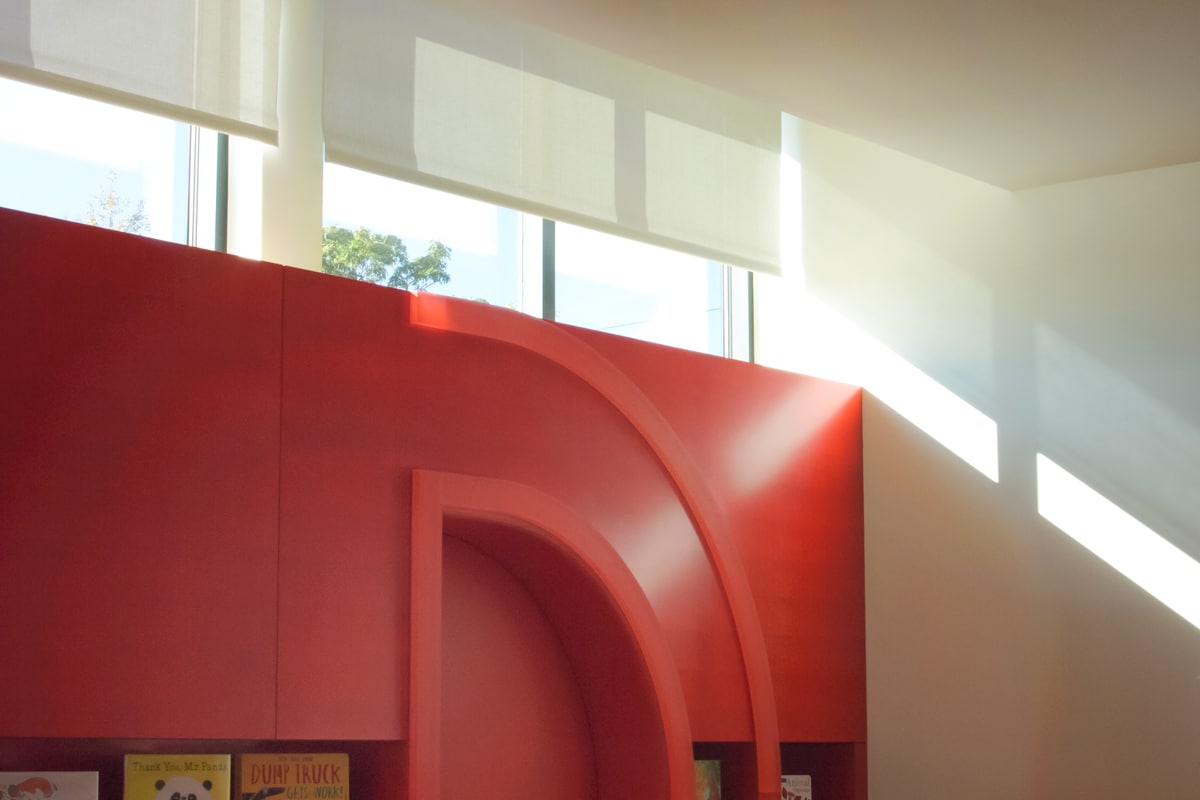
[Photos: Courtesy of SunorShade]

We interview lighting expert Marti Hoffer for her thoughts on what it takes to truly make the best interior spaces.
Open sourcing—it’s key to the future of sustainability and a pain point for a green building industry that’s both hell-bent and reliant on brand recognition. The struggle is real, but there are minds working to overcome it. Marti Hoffer, CEO of natural lighting firm lumenomics and manufacturer of SunOrShade window treatment systems, knows the only way to create a truly successful transformation in green design and construction is to open the windows and let some fresh air, not to mention bright ideas, inside.
“Thoughtfully transforming interior spaces with a well designed daylight system requires more than just buying a brand,” she says. “You wouldn’t rent a dump truck to get five bags of mulch for your home garden project.” Project owners and designers need to consider the functionality of products in their intended spaces and systems like HVAC, energy management, and lighting as a whole.

[Photos: Courtesy of SunorShade]
Can occupants control the systems if needed? How? Are they intuitive? Are key features integrated, or do they stand alone? Are you getting the right bang for your buck? We’re back to the metaphor of renting a dump truck for an afternoon of puttering around flower beds, but the results of not thinking through these issues in advance could range from a simple waste of money to an expensive buy that meets the code or LEED contract requirements but just doesn’t work as intended, or a $50,000 change order to make your space habitable. “Instead of subjecting projects to a cut-and-paste spec approach, it’s important to look at the needs of individual projects in creating a performance shade system, be they offices, multi-family housing, health care facilities, or schools,” Hoffer says.
The key is to open up and expand the product search with performance, not brand, in mind. SunOrShade window treatment systems, for example, can meet any high-performance design objectives using the same underlying protocol of well-known brands. But what makes SunOrShade particularly stand out is the products’ flexibility with design and options for customization, not to mention it’s the only window covering brand that bears the Women Owned logo on its packaging and products.
“Thoughtfully transforming interior spaces with a well designed daylight system requires more than just buying a brand.”
The mechanical SunOrShade window coverings are powered by Somfy or Rollease Acmeda’s low-voltage and line-voltage motors and controls, industry standards each. They’re operated by remote controls and wall control panels that allow building occupants to easily control the openness of their views and the amount of light coming in. Meanwhile, SunOrShade fabric options, translucent to opaque, offer varying colors and varying degrees of solar performance, light and heat filtration, to fit into your interior design, window glaze, and building code needs.
The SunOrShade system controls allow for minimal to total smart automation with the integration of lighting, tubular daylighting devices, heating and cooling, sun sensors, and timing technologies, controlled separately or altogether using computer software and user-friendly interfaces. When energy efficiency is maximized through smart lighting systems, summertime energy costs decrease while occupant comfort increases. “Our solutions are occupant centric, and they’re automated to deliver a high-performance illumination system,” Hoffer says. “SunOrShade is an open source solution that looks at the entire building system.”


